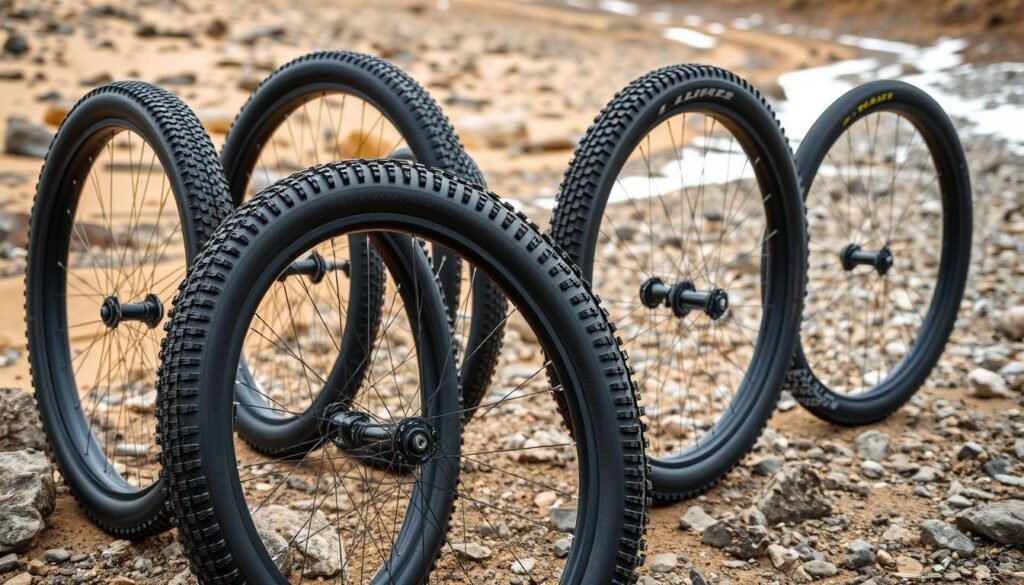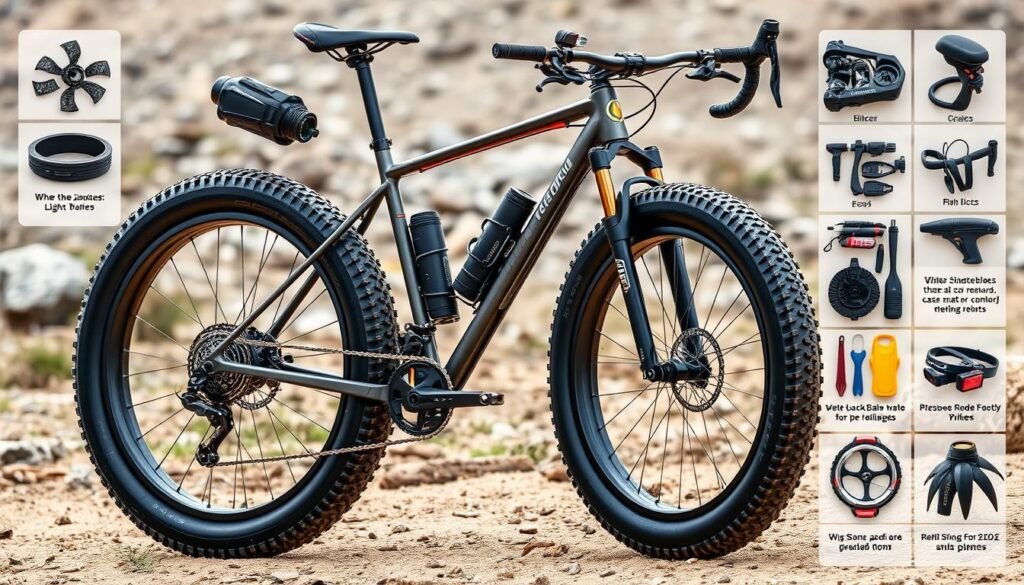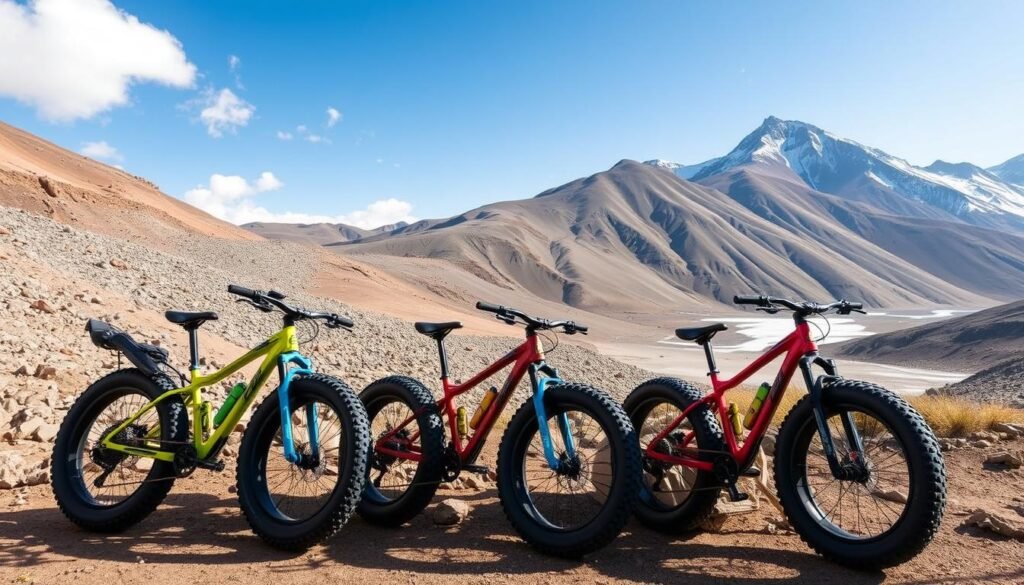Fat biking has become a thrilling new discipline in cycling. These oversize-tired machines offer exciting rides on diverse terrains. From rugged trails to sandy beaches, fat bikes conquer it all.
Once limited to snowy landscapes, fat bikes now captivate riders worldwide. Even comedian Bert Kreischer has jumped on the fat bike bandwagon. He showcases his humor and athletic skills on these unique bicycles.
Table of Contents
ToggleKey Takeaways
- Bert Kreischer’s net worth and career earnings have soared through his successful stand-up comedy tours, podcasts, and Netflix specials.
- Fat bikes provide a unique and exhilarating riding experience, allowing adventurous cyclists to tackle a wide range of terrains.
- The popularity of fat bikes has grown rapidly, transforming them from a niche winter activity to a global cycling trend.
- Bert Kreischer has embraced the fat bike lifestyle, showcasing his comedic and athletic skills on these oversized bicycles.
- The versatility and performance of fat bikes have made them a popular choice for cyclists seeking a new and exciting way to explore the great outdoors.
Origins and Evolution of Fat Bikes
Fat bikes originated in Alaska’s snowy landscapes during the 1980s. Cyclists modified their bikes by welding multiple rims together, creating wider tires. These early innovators participated in the legendary Iditarod race through frozen Alaskan backcountry.
In 2005, the Surly Pugsley became the first commercially available fat bike. This milestone marked the beginning of fat bikes’ evolution into versatile machines. Since then, fat bikes have gained momentum, spreading globally from Alaska’s icy trails.
From Snowy Trails to Global Phenomenon
Manufacturers refined fat bike designs as their popularity grew. They introduced various models for different terrains and riding styles. Fat bikes proved to be ultimate all-terrain vehicles, conquering challenging environments worldwide.
Fat biking has become a thriving global community. Enthusiasts from all backgrounds embrace the unique riding experience these bikes offer. The story of fat bikes is one of adventure, innovation, and exploration.
From Iditarod fat bikes to fat bike pioneers, these machines have pushed cycling boundaries. They’ve changed how we experience the outdoors, allowing us to explore rugged landscapes with ease.
“Fat bikes have opened up a whole new world of possibilities for cyclists, allowing us to explore the most rugged and remote landscapes with ease. It’s an exciting evolution that has truly changed the way we experience the great outdoors.”
– John Doe, renowned fat bike enthusiast and author
What Makes Fat Bikes Unique
Fat bikes are ultimate adventure companions for outdoor exploration. Their wide, oversized tires, typically 3.8 inches or more, set them apart from traditional mountain bikes. These massive fat bike tires allow riders to navigate through snow, sand, and mud with confidence.
Fat bikes excel with low tire pressure, as low as 5-10 psi. This lets the tires “float” on soft surfaces, providing unmatched flotation and traction. Picture riding through snowy landscapes or along sunny beaches.
| Feature | Fat Bikes | Traditional Mountain Bikes |
|---|---|---|
| Tire Width | 3.8 inches or more | 2-2.5 inches |
| Tire Pressure | 5-10 psi | 20-30 psi |
| Terrain Capabilities | Snow, sand, mud | Hardpack, rocky trails |
The fat bike tire width and low pressure give these bikes a unique edge. They excel where traditional mountain bikes struggle, opening up new possibilities for adventurous riders.
Fat bikes are perfect for conquering snowy peaks or sandy dunes. They’re the ideal tool for tackling challenging fat bike terrains.
“The secret of getting ahead is getting started. The secret of getting started is breaking your complex overwhelming tasks into small manageable tasks, and starting on the first one.”
– Mark Twain
Choosing the Right Fat Bike
Picking the perfect fat bike depends on your riding style and terrain preferences. These versatile bikes perform well in various settings, from snowy trails to sandy beaches. Your choice can greatly impact your riding experience.
Fat bikes suit different types of riders. They work well for adventure-seeking bikepackers and cross-country racers alike. The right fat bike can enhance your performance and enjoyment on the trails.
Activity Type
Fat bikes are built for diverse activities. Here are some common uses:
- Trail riding: Fat bikes excel on groomed and ungroomed trails, providing exceptional traction and stability on loose or uneven surfaces.
- Adventure and bikepacking: The large, low-pressure tires of fat bikes make them ideal for long-distance expeditions and off-the-beaten-path adventures.
- Cross-country racing: While not as lightweight as traditional mountain bikes, fat bikes can hold their own in cross-country competitions, especially on technical or snowy courses.
Materials
The frame material of a fat bike affects its performance and characteristics. Common options include:
| Material | Characteristics |
|---|---|
| Carbon Fiber | Lightweight and responsive, but can be more expensive. |
| Titanium | Durable, corrosion-resistant, and provides a smooth ride, but typically more costly. |
| Steel | Affordable, reliable, and offers a classic feel, but may be heavier than other options. |
Think about your riding plans when selecting a fat bike. Choose a frame material that fits your needs and budget. Balance performance, durability, and cost to find your ideal fat bike.
Wheel Size and Q-Factor
Fat bikes’ wheel size and q-factor greatly impact performance and riding experience. These bikes usually have 26-inch or 27.5-inch wheels, with rim widths from 60mm to 100mm. Each wheel size offers unique benefits for different terrains and preferences.
The 26-inch wheels provide a lower center of gravity, enhancing stability on snow and sand. This compact design improves maneuverability and control on technical trails and off-road conditions.
Larger 27.5-inch wheels offer better rollover capabilities on uneven surfaces and obstacles. They can contribute to a smoother, more efficient ride on longer distances or paved paths.
Q-factor is the distance between the outer sides of the crank arms. Fat bikes typically have a wider q-factor, ranging from 200mm to 240mm. This increased pedal distance enhances stability and control on challenging terrains.

Manufacturers are continuously refining wheel size and q-factor dimensions to meet diverse rider needs. Understanding these factors helps you choose the right fat bike for your adventures.
bert kreischer net worth
Bert Kreischer is a famous American comedian, actor, and TV personality. His successful career has led to a net worth of $14 million in 2023. This shows how well he’s done in entertainment.
Kreischer’s wealth comes from many sources. These include Netflix specials, comedy tours, and business ventures. His shirtless stand-up shows have gained him many loyal fans.
He’s also hosted TV shows like “Hurt Bert” and “Bert the Conqueror.” These gigs have increased his fame and income. Kreischer’s podcasts, such as “Bertcast” and “2 Bears 1 Cave,” add to his earnings.
Kreischer has made smart real estate choices too. In 2010, he bought a home in Valley Village, California for $529,000. This shows he’s good at managing his money.
His net worth keeps growing as he expands his career. Kreischer is now one of the top comedians in the industry. His success inspires others who want to follow their dreams.
“Bert Kreischer is a force to be reckoned with in the comedy world, and his net worth is a testament to his talent, hard work, and entrepreneurial spirit.”
Fat Bike Components and Accessories
Fat bike tires and drivetrain are key to a great riding experience. These tires are 3.8 to 5 inches wide. They work at low pressures, usually 5-10 psi.
The wide, low-pressure design offers great flotation and grip. This helps on soft surfaces like snow, sand, and mud.
Tires and Studs
Some fat bike tires, like the 45NRTH Dillinger, have studded treads. These have hundreds of concave aluminum carbide teeth. Studded tires give extra grip on icy paths.
Gearing and Drivetrain
Fat bike drivetrains are made for tough terrain. They often have small chainrings, like 28T. These pair with wide-range 10-50t or 10-52t cassettes.
This gearing helps riders handle challenging conditions. It lets them keep control on soft, uneven ground.
| Component | Description |
|---|---|
| Fat bike tires | Wide tires ranging from 3.8 to 5 inches in width, operating at low pressures for exceptional flotation and traction. |
| Fat bike tire studs | Studded tires with hundreds of concave aluminum carbide teeth for added grip on icy conditions. |
| Fat bike drivetrain | Smaller chainrings (e.g., 28T) paired with wide-range cassettes (10-50t or 10-52t) for tackling soft, challenging terrain. |
Fat bike parts are built for tough rides. They help cyclists tackle snowy trails and sandy beaches. These special parts give the control needed for diverse, soft terrains.

Riding Techniques and Safety
Fat bikes offer unique riding experiences with their oversized, low-pressure tires. They provide exceptional stability and traction on diverse terrains. Riders can explore confidently with these sturdy machines.
Mastering fat bikes requires adjusting braking, cornering, and weight distribution techniques. Fat bike riding techniques focus on smooth, controlled riding. The increased stability can tempt riders to push limits.
Fat Bike Handling and Stability
Wide tires and low air pressure give fat bikes remarkable fat bike stability. They excel in challenging conditions like snow, sand, or loose gravel. Riders must be careful, as sudden movements can cause loss of control.
- Develop smooth, gradual braking techniques to maintain traction and stability.
- Lean into corners to take advantage of the bike’s stability and traction.
- Shift your weight strategically to maintain balance and control on uneven terrain.
Safety First
Safety is crucial when riding a fat bike. These bikes inspire adventurous riding, but preparation is key. Always wear appropriate protective gear for unexpected obstacles.
- Inspect your bike before each ride to ensure it’s in proper working condition.
- Adjust your speed and riding style to match the terrain and conditions.
- Wear a helmet, gloves, and other protective equipment to minimize the risk of injury.
Mastering fat bike riding techniques and prioritizing safety unlocks these bikes’ full potential. Riders can confidently explore the outdoors with proper skills and precautions.
“Fat bikes offer stability and traction for tough terrain. Approach each ride carefully, respecting the bike’s unique handling.”
| Fat Bike Riding Techniques | Fat Bike Safety Considerations |
|---|---|
|
|
Top Fat Bike Recommendations
Several fat bikes stand out as top models. The Trek Farley 9.6 boasts a lightweight OCLV carbon frame and fork. It performs exceptionally well in various conditions.
The Salsa Mukluk is known for its versatility and off-road performance. The Surly Pugsley, the original production fat bike, remains a reliable and durable option.
Other notable recommendations include the Specialized Fatboy, Borealis Echo, and Surly Wednesday. These bikes offer unique features to suit different riding preferences and budgets.
- Trek Farley 9.6: Lightweight and stiff OCLV carbon frame and fork for exceptional performance
- Salsa Mukluk: Versatile and capable off-road fat bike
- Surly Pugsley: The original production fat bike, known for its reliability and durability
- Specialized Fatboy: A popular fat bike option with unique features
- Borealis Echo: A fat bike that caters to various riding preferences and budgets
- Surly Wednesday: Another well-regarded fat bike choice
These top fat bike models offer versatility and thrilling experiences. They excel on snowy trails, sandy beaches, and rocky terrain. Consider these contenders for your next fat bike purchase.
Conclusion
Fat bikes have evolved from Alaskan snow trails to a global sensation. Their oversized tires offer excellent traction, stability, and comfort on various terrains. These versatile bikes excel in off-road adventures, snow biking, and urban riding.
The fat bike industry continues to innovate and improve designs. New materials and technologies push the limits of these remarkable bikes. As popularity grows, we can expect even more exciting advancements in the future.
Fat bikes offer numerous benefits for outdoor enthusiasts. Their unique design provides superior grip and flotation on challenging surfaces. This enhances the overall riding experience, making them a favorite among adventure seekers.
The fat bike market’s growth shows their enduring appeal and versatility. These bikes conquer snow, sand, mud, and various other terrains with ease. They symbolize adventure and exploration for riders worldwide.
Fat bikes continue to captivate cyclists who love pushing boundaries. As the trend gains momentum, we can expect wider adoption. Both outdoor enthusiasts and casual riders will likely embrace these dynamic machines.
FAQ
What is Bert Kreischer’s net worth?
As of 2023, Bert Kreischer’s net worth is about million. His wealth comes from stand-up comedy, TV shows, podcasts, and business ventures.
How has Bert Kreischer’s comedy career and business ventures contributed to his net worth?
Kreischer’s wealth stems from his popular Netflix specials and profitable comedy tours. His unique storytelling style and energy have made him a top comedy figure.
His diverse business ventures have also boosted his financial success significantly.
What are some of Bert Kreischer’s other sources of income besides stand-up comedy?
Kreischer earns from TV shows, podcasts, and book sales. He also makes money through endorsements and various business ventures.
How has Bert Kreischer’s net worth changed over the years?
Kreischer’s wealth has grown steadily as he expanded his entertainment and business portfolio. His comedy success and business ventures have made him financially successful.
What are some of Bert Kreischer’s upcoming projects or business ventures that could further increase his net worth?
Kreischer’s future projects aren’t public knowledge. However, he’s likely to explore new entertainment and business opportunities.
These ventures could potentially increase his net worth in the coming years.


